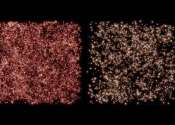Tracking near-Earth cosmic explosions
When massive stars or other stellar objects explode in the Earth's cosmic neighborhood, ejected debris can also reach our solar system. Traces of such events are found on Earth or the moon and can be detected using accelerator ...









